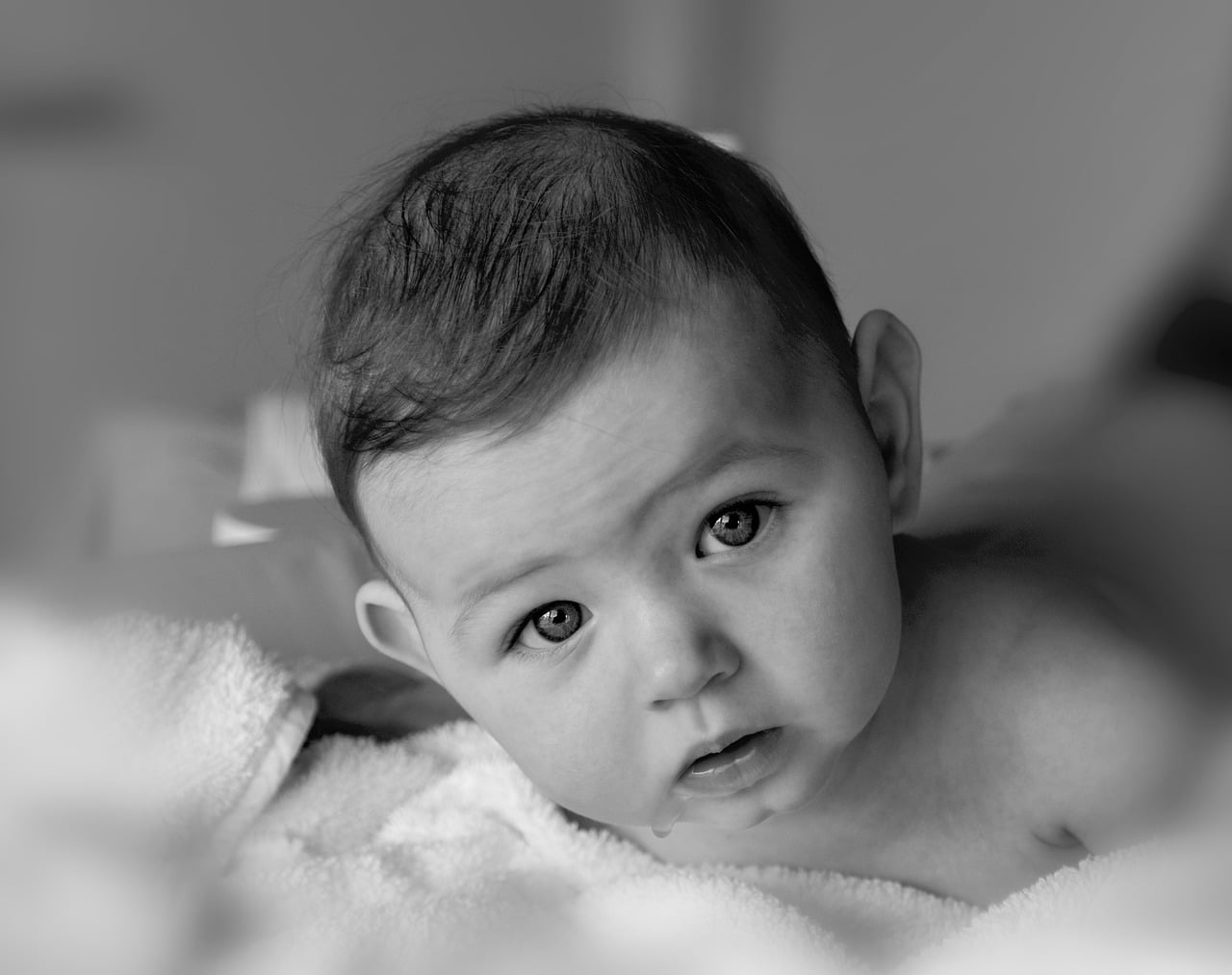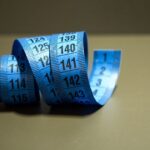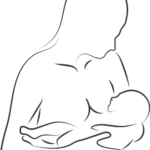Image credit to BETTEN.DE
How To Identify and Treat Baby Drool Rash
A host of things can irritate the sensitive skin of a baby—including their own saliva. A drool rash is a rash that happens when the saliva that drools out of the mouth lands around the lips, chin, and cheeks.
Discover what causes a drool rash, how you can prevent the rash around your baby’s mouth, as well as help keep them more comfortable while their skin heals.
Why Babies Drool
Identify and Treat Baby Drool Rash
Drooling tends to really pick up between the ages of 3 to 6 months when babies develop into their “oral-centric” selves. In fact, there are a lot of important functions drool serves. For example, a baby’s saliva contains information about their health.
When a baby is nursing, bacteria and other microbes in the baby’s saliva interact with the parent’s mammary glands to affect the composition of the breast milk. If the baby gets sick, for instance, a mother’s milk may alter its content, being rich in the antibodies that the baby requires to fend off the disease.
Baby Saliva’s Function
The American Academy of Pediatrics reports that saliva first functions to:2
Moisten solid food in the mouth
Breaking down of starch
Help baby to swallow more easily
Clearing
Baby food
Chewing food particles,
Protection of cavity of baby’s teeth
Causes of Drool Rash
Too Much Saliva. A drool rash can occur when a baby has too much saliva on the skin and combined with irritating perform me topically around the baby’s mouth. The lip, chin, and cheeks are usually the first areas affected, but the neck and chest can also be if saliva collects and stays in those areas for an extended period.
Teething. You may notice red, inflamed skin, or little red hives that cluster in a rash around your baby’s mouth. Sometimes, teething causes a drool rash. According to the AAP, increased saliva in a baby’s mouth when they’re teething might actually act to protect and soothe tender gums.
Pacifiers. Babies who use pacifiers are at risk of Drool rash because the skin around the pacifier remains wet due to it. Other things that can cause similar skin irritation include residual breast milk or formula on a baby’s face for extended periods of time.
Also Read : Can You Overfeed a Newborn?
Drool Rash Prevention
A drool rash can be a hassle for most parents and caregivers, as babies appear to have a magical way of producing saliva in unbelievable amounts. In most cases, where the drool rash is caused by something temporary, like teething, it will not last long.
Be prepared to manage more drooling, and prevent a rash before it gets rather painful for your baby. The best way to do that is to build a barrier between your baby’s skin and the saliva. This will help prevent or minimize drool rash. There are other important steps that you can consider toward preventing a drool rash:
Place a waterproof bib on your baby while he is drooling. The bib can keep saliva off of your baby’s chest and prevent skin irritation.
Change your baby’s shirt when drooling has made it damp. The wet shirt may irritate your baby’s skin. A possible way of averting the irritation is by changing their clothing when it is damp.
Wipe your baby’s face clean after a feeding. Use a damp cloth, not one that’s wet enough to stick, and don’t rub. Avoid soap or cleansing wipes as these may further irritate.
Wipe off saliva. Use a soft cloth to regularly wipe saliva from your baby’s skin when you are with them. When you’re away, send a burp cloth with your infant and speak to their caregiver or daycare provider about trying to keep the rash area dry.
Inspect your baby’s pacifiers and bottles. Check to see if either is causing your baby’s face to chafe— Pacifiers should be boiled each day to keep harmful bacteria at bay, and bottles should be washed after every meal.
How to Treat Drool Rash
How To Identify and Treat Baby Drool Rash ?
If your baby already has a drool rash, you must let the skin recuperate on its own and prevent the skin from becoming more irritated as it heals. Follow these steps to allow for the skin to recuperate and also to be protected from further irritation:
After feedings or spit-up, gently wipe your baby’s face with water. Pat dry. Rubbing can irritate your baby’s sensitive skin. Be sure to keep your baby’s face dry, though. Reduce irritants within your baby’s environment. Use fragrance-free soap during baths and think about switching to a fragrance-free detergent for your little one’s clothes and bedding.
Consider doing your laundry with the same detergent you use for baby’s clothes and refrain from using heavily scented lotions or perfumes. Whatever it is you are putting on your clothing or skin may further irritate your baby’s drool rash.
How to Help Drool Rash Get Better Quicker
Let your baby be naked. Do you know what heals irritated skin best? Open air. And the best way to accomplish that is by letting your baby go topless to allow the skin to breathe and dry out.
Limit pacifier use. If you notice your baby’s pacifier tends to keep the skin around your child’s mouth wet and seems to make the rash worse, you may want to limit its use. On the other hand, a pacifier may help reduce the amount of drool that actually comes out of your baby’s mouth. Experiment to see what works best for your baby.
Create a barrier over your baby’s skin: If your pediatrician has given the go signal, and if the baby has no history of skin reaction, you can apply an emollient over the inflamed areas. The skin must be clean and dry before doing so. This is done to provide further protection to the skin.
When To See a Health Care Provider
But whereas drooling is very much normal, here are a few instances that can be some red flags: Increased drooling in the baby can also be a symptom of any infection. If you notice your baby being unusually fussy, not sleeping well, not eating much, or having a fever with swollen glands, consult a pediatrician immediately.
Because fever can accompany the teething process, it’s often difficult to tell if your drooling baby is infected or just teething. In general, teething fevers are under 101 degrees Fahrenheit.5 When in doubt, take a trip to your child’s pediatrician just to be on the safe side.










